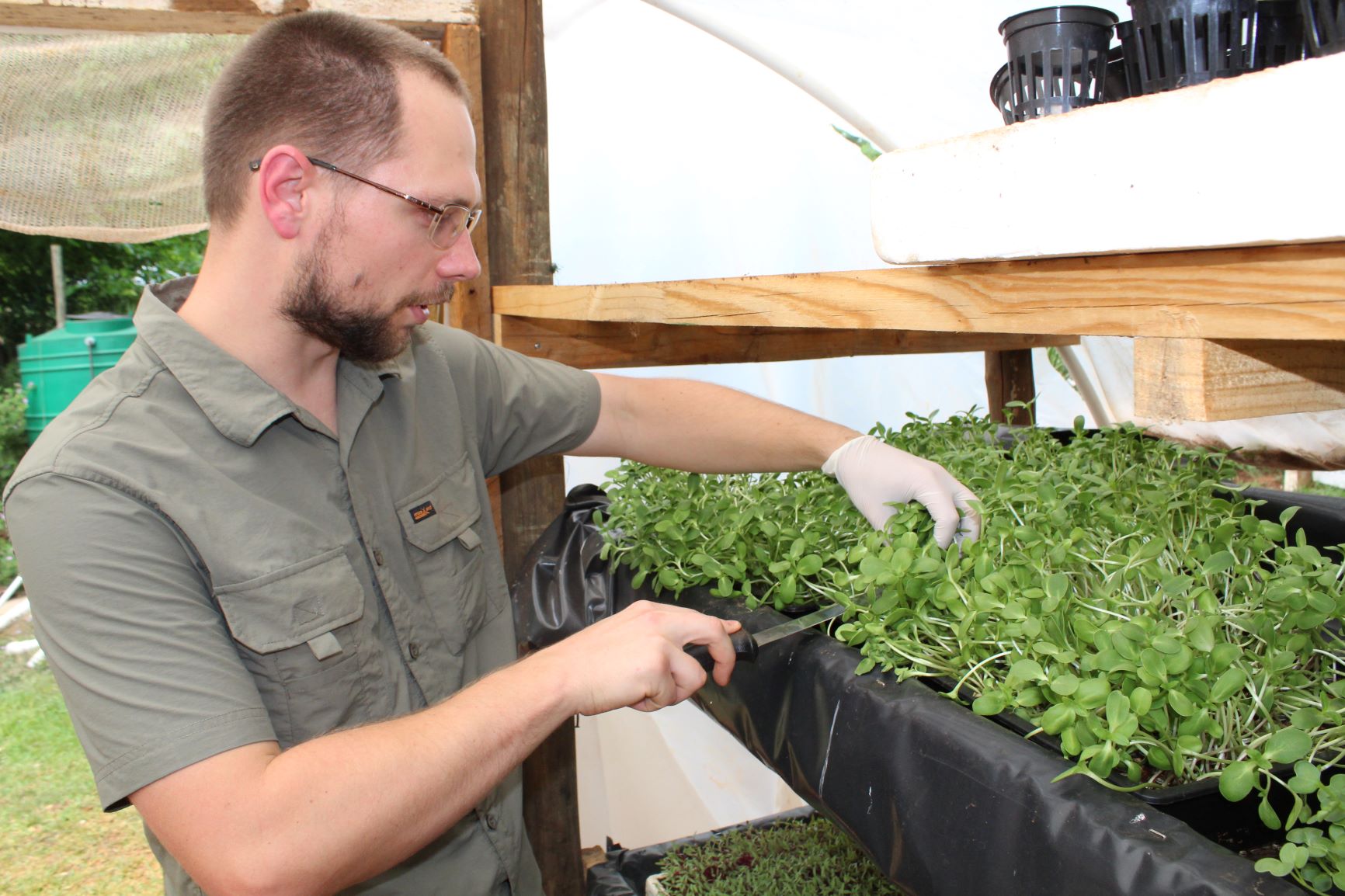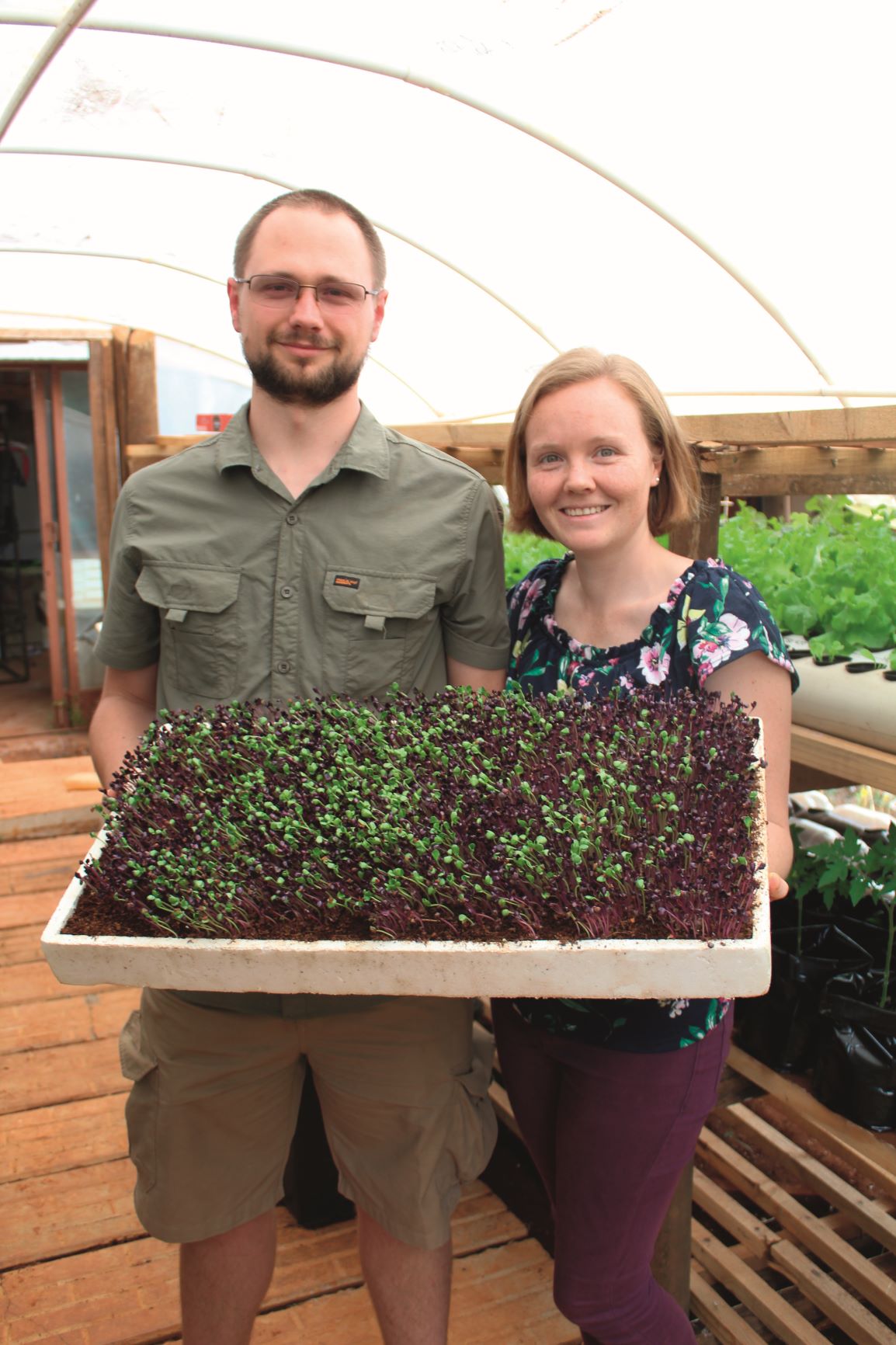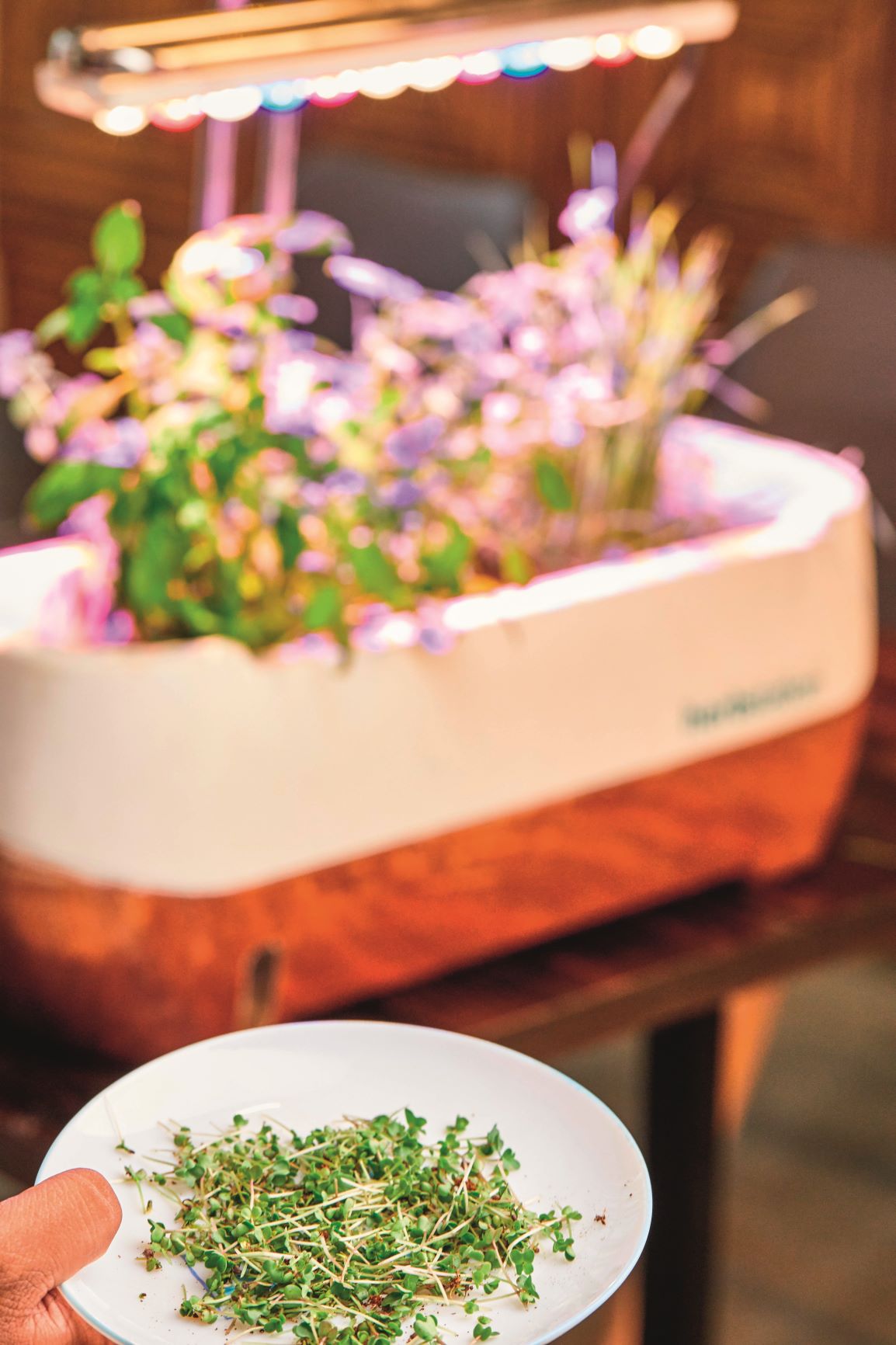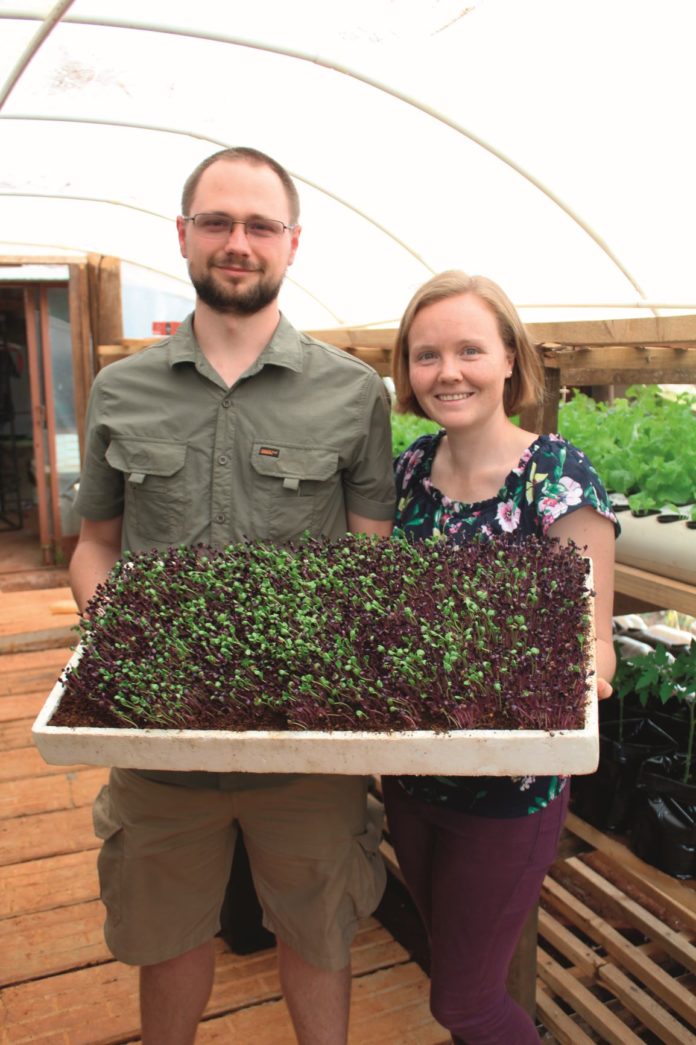Spending his days tied to his desk, Jan-Hendrik du Plessis longed to get his hands dirty out in the sunshine. Intended as a hobby to offset his IT job, he started experimenting with microgreen production. Quick to spot a gap in the market for this vibrant superfood, his wife, Melanie, turned his hobby into a business, with budding results.
Energetic, and with multiple job titles, Melanie does not shy away from a new challenge – or hard work. Besides assisting Jan-Hendrik in his IT business, graphic designing, content creation and fundraising for their church, she is also the mother of a two-year-old. Now she has added the title of “farmer” to her repertoire, too.
Regarding this title, she laughs. “As an Afrikaner, or Boer, I always grew up wondering what the concept of being a ‘boer’ was. I never thought I would be a real bona fide boer who farms. Now I am farming and it’s exciting. I’m not just a Boer in blood and heritage, I actually farm now, too!”
The project started in 2018 when Jan-Hendrik started researching hobbies to do in their home town of Sabie, to offset long hours spent in front of a computer. After seeing a YouTube video on microgreen production, he decided to test it out. After the first six trays he planted had been a success, he started increasing production.

Jan-Hendrik tends to his crop
At this stage Melanie sold and distributed honey sourced from local farmers. “But the honey supply dropped drastically in recent years, so when I realised that Jan-Hendrik’s ‘hobby’ was turning out to be a great success, I decided to load my car with microgreens and go and look for a market. I approached fine dining restaurants in the Lowveld and after receiving our first orders, Bumblebee Organics was officially on track. Today we supply around 10 restaurants and a few supermarkets in the area,” she smiles.
Far from being just a garnish, microgreens are classified as a superfood and contain 40% more nutrition than vegetables. Benefits range from beet that promotes heart function, to radishes promoting digestion and weight loss, and sunflowers aiding cellular recovery to assist with reducing ageing. The colourful leaves pack a punch in terms of flavour and can be used in salads, as a tasty snack or added to a range of dishes to add freshness and flavour.
Since the microgreens are harvested at a young age after only a few days’ growth, the crop obtains all of its nutrients from the seed and are harvested before they get to a point where they need a further boost. They also don’t require any fertilisers or pest control, resulting in an organic crop.
Jan-Hendrik is responsible for the production and notes that the good thing about farming microgreens is that the cycle is quick, so you learn faster. “If you make a mistake this week, you can fix it next week, which makes it an ideal crop for first-time farmers like Melanie and I.”

Jan-Hendrik and Melanie du Plessis
The microgreens are produced in a simple but effective greenhouse that Jan-Hendrik constructed adjacent to their house. The whole greenhouse is five metres in length and two-and-a-half metres wide.
He explains that different microgreens require different temperatures for optimal growth, with sunflowers needing warmer temperatures. “The Sabie climate has worked out well for microgreen production. In summer it averages between 27°C and 32°C with high humidity.
Winter averages 17°C in the day with minimums as low as -1°C. We do get frost, but with the greenhouse we can close the sides so the frost does not affect the crop. They grow slower in winter so we shift our harvest on with about two days.”
The microgreens are harvested and delivered to clients once a week, with Melanie handling the bulk of the sales and marketing. She says much of her and Jan-Hendriks’ time is spent trying different things out to see what works best. “Much of what we are doing is in test phase, and we have various different projects on the go to see how we can optimise production.”

From the crop to the plate
They are currently in the process of certifying the crop as organic, so that they can supply a wider range of supermarkets and reassure their customers that the microgreens are produced correctly.
Melanie says, however, that for the market to grow, consumer education is needed on the benefits and uses of microgreens. “As Jan-Hendrik and I continue to dream, we are positive about the future of Bumblebee Organics, and with so many new plans, I believe we will go from strength to strength.”
Details
[email protected]
Text and photography: LINDI BOTHA






